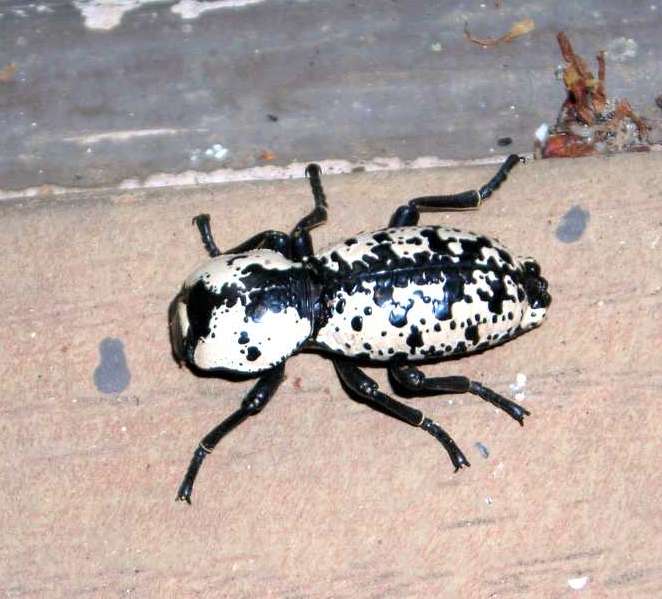The Ironclad Beetle is famously known for having the ability to be run over by a Toyota Camry and survive. The beetle is known for the hardened casings on each wing that interlock and support the beetle’s exoskeleton. So what else is differentiable about the ironclad beetle?
The ironclad beetle can withstand forces up to 39,000 times its own body weight because of the hardened casings on its exoskeleton. An analysis of the beetle’s elytra, the hardened casings on top of each forewing, shows that the shields interlock like a 3D jigsaw puzzle and can deform under enormous weight without losing their shape. The elytra fit with the rest of the beetle’s exoskeleton like a suit of armor. The hard shell serves the purpose of protecting the beetles’ organs. Entomologists who try to mount these beetles for display usually wind up with their steel pins bent or snapped in half.
Most other beetles only live for several weeks or months. The ironclad can live for up to two years and they are found mostly in oak trees on the Pacific Coast of North America. They can be found in the central part of Texas and southern Mexico. Ironclad beetles also cannot fly. There are actually several different species of ironclad beetles.
The life cycle of these beetles is similar to the life cycles of other insects, including eggs and larvae. However, little is known about the actual biology of the ironclad beetles. The larvae and pupal stages have been found in pecan trees. Pecan trees serve as a developmental sight for the beetles. Adult ironclad beetles have been found in oak trees in the College Station, Texas area. The adult beetles have been known to feed on the lichens that grow on the trunks on the oak trees.
The beetle’s wing cases, which fit together like puzzle pieces, connect by the sutures being joined together. Sutures are defined by Lumen Learning as, “rigid immovable connections holding bones tightly to one another.”
The sutures of the beetle, which are called blades, are similar to the sutures found in the human skull. By mimicking the interlocking nature of these protective layers found in the ironclad beetle, scientists and engineers could build better aircraft and armored vehicles. These better designed aircraft and vehicles would help give the United States Air Force and army a better advantage.
The Air Force is currently doing research on the ironclad beetles that they invested $8 million. This project is to help them understand the outside layers of the ironclad beetle, specifically the elytra, and how to design aircraft and armored vehicles built like the beetles.
The ironclad beetle is unique from other beetles because of its hardened casings, elytra, connected to its exoskeleton. The ironclad beetle is also not easy to kill, as it can withstand forces up to 39,000 times its weight. While not much is known about the beetle, hopefully entomologists and scientists will be able to study the beetle more closely to learn more about the insect.




